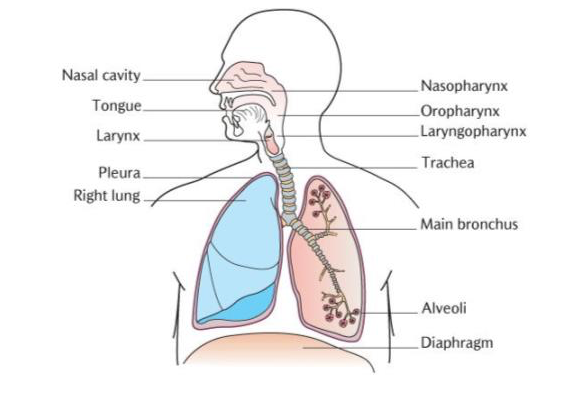November is lung cancer awareness month we use this dedicated time to raise awareness about lung cancer, its risks and the importance of early detection and support for those affected. For those of us working in the filed it’s an ample time to focus on providing education, support and prevention for those impacted.
What are your lungs?
Your lungs are a pair of spongy, pinkish grey organs in your chest
When you inhale (breath in), air enters your lungs, and oxygen from that air moves to your blood
At the same time, carbon dioxide, a waste gas, moves from your blood to the lungs & is exhaled (breath out)
This process is known as gas exchange and is essential to life
They are the centrepiece of your respiratory system
Respiratory System
The respiratory system also includes the trachea (windpipe), muscles of the chest wall and diaphragm, blood vessels & other tissues
Your brain controls your respiratory rate (how fast or slow you breathe)
A patient’s respiratory rate should be counted for 1 full minute while observing the use of their accessory muscles
A change in respiratory rate is always a sign of a change in the patient’s condition

Statistics
Lung cancer is the most common cancer worldwide
It is most common in men and the 2nd most common in women
There were 2,480,675 new cases of lung cancer in 2022
China, the US and Japan had the highest number of lung cancer cases in 2022
China, the US and Japan had the highest number of deaths from lung cancer in 2022
Lung Cancer
Lung Cancer is divided into sub-groups
Non-Small Cell Lung Ca (The most common type)
Adenocarcinoma, Squamous & Large Cell
Small Cell Lung Ca
This is usually caused by smoking and accounts for about 15-20% of diagnosed lung cancers
Rare
Lung Sarcoma/Lung Lymphoma/Mesothelioma
Symptoms
Persistent Coughing
Coughing up blood
Shortness of Breath
Wheezing
Recurrent Chest Infections
Fatigue
Weight Loss
Pain- (Arm/Shoulder)
Risk Factors
Smoking
Smoking causes nearly 9 in every 10 lung cancers the longer the patient smokes the greater the risk breathing in others smoke also increases their risk
Family History
The risk is increased if an immediate family member has had lung cancer immediate family members include parent, brother, sister or child
Chemicals
Exposure to certain chemicals such as asbestos, mental dust, paints and diesel exhaust
Radon Gas
Being exposed to radon gas in areas where levels are high can also increase the risk
Reducing the risk
Don’t smoke- it’s never too late to quit the sooner a patient stops they reduce their risk it’s important we provide appropriate assistance to aid a patient with this such as a referral to a smoking cessation service
Avoid second hand smoke
Protect yourself from chemicals and pollutants
Look out for changes that are not normal for you- Speak to your doctor if you notice anything unusual like pain, unusual bleeding and new symptoms that don’t improve after a few weeks
Diagnostics
Patients may go through a range of tests such as CxR, blood tests, pulmonary function tests, CT scans, Bronchoscopy and Lung Biopsy to confirm their diagnosis
Treatment
Depending on the tumour and tissue diagnosis the patient may be offered either surgery, radiotherapy, chemotherapy, immunotherapy or targeted treatment. The above may also be offered in combinations
As those involved with these patients we must remember they are scared and concerned by the time they get to us so it is imperative we take the time to give them a chance to talk and provide the right factual information about treatment
Lung cancer awareness month in particular is a chance to highlight research, support those affected and educate the public on the risk factors
Useful Resources
https://www.cancer.ie/cancer-information/cancer-types/lung-cancer
https://www.wcrf.org/preventing-cancer/cancer-types/lung-cancer/
https://www.aacr.org/patients-caregivers/awareness-months/lung-cancer-awareness-month/
https://www.macmillan.org.uk/cancer-awareness/lung-cancer-awareness-month